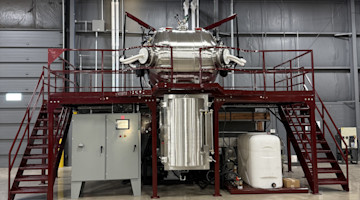Despite the challenges raised by COVID-19, South Korea's excellent human capital, adoption of high-value manufacturing, and exceptional ports are well positioned to stabilize the industry and allow the country to maintain a prominent position in the automotive sector. Due to rising labor costs, South Korea has readily adopted new manufacturing technologies, placing it in a strong position to take advantage of Industry 4.0 trends. The country has the second-highest density of robots in the world per 10,000 employees and is a leader in the industry. The South Korean government has realized the importance of the automation of the manufacturing base and has targeted the creation of 30,000 smart factories in the country by 2025. Moreover, the government aims to prepare its highly educated population to operate entirely automated manufacturing sites by training 40,000 employees. While the South Korean automotive industry has been in decline, its quick adoption of developing technologies makes it a substantial market for high-end tools and auto parts. Its proximity to Japan, coupled with its excellent merchant fleet, shows that South Korea can continue to play a prominent role in automotive production, even in the face of declining production.
The addition of electronic components in cars provides a novel niche for tier-two suppliers in South Korea. Electronic component manufacturers like LG and Samsung see the convergence of the automotive markets with their business. LG set up its automotive sales unit in 2013, and Samsung acquired Harman in 2017, building its presence in the industry. The growth of semiconductors in cars, coupled with software advancements in automotive technology, allows South Korea's conglomerates to find new areas to add value. These companies are leaders in their sector, meaning cars will be dependent on these electronic components for their final products. Already, Samsung controls 12.5% of semiconductor revenue worldwide, placing it in position to drive the integration of the technology. Further developments such as 5G and the Internet of Things (IoT) will only accelerate this trend. South Korea can either export these parts or use their excellent manufacturing base to complete assembly of passenger vehicles. These then could be easily exported because of the proximity of excellent ports and logistical systems. The integration of electronics in cars will positively boost the South Korean automotive industry in the face of a decline in other areas.
Supply Chain Operational Shifts
In the next five years, the demand to restore supply closer to the market of sale will be to the significant detriment of South Korean auto manufacturers. Their heavy reliance on foreign consumers in the United States, Europe, and other developing markets will require factories to move. Since 2014, Hyundai and Kia have been considering moving production to Mexico to move closer to their major market and to comply with the USMCA. This may similarly be mirrored for developing markets in the Middle East and Africa, where South Korea has already signed agreements with Saudi Arabia to produce cars in the region. South Korean automotive companies will move their production outside of the country, diminishing not only the trade in automotive vehicles but also parts.
Furthermore, automotive vehicle parts producers have been pressured by Hyundai to cut costs instead of investing in future technologies, such as electric vehicles. This aggravates the continuing decline of industry as development costs of new parts are not shared between the large OEMs and suppliers of parts. This disincentivizes the production of new, more advanced parts, as suppliers are expected to fund innovative research without support. This contrasts with Japanese car manufacturers, who often build relationships with tier-one to tier-three producers and share development costs. Unless trends reverse, South Korea promises to continue losing production for the foreseeable future.
Still, there are recent positive developments to consider. As Troy Stangarone noted in his February 2021 article for The Diplomat: “Despite overall global automobile sales falling from 74.9 million vehicles to an estimated 61.9 million vehicles, sales of electric vehicles continued to grow in 2020. South Korean exports of electric vehicles expanded by 65.9 percent, while exports of the lithium ion batteries needed to power electric vehicles grew by 4.3 percent in the second half of 2020.”
The information provided in this article is based on research and report provided by George Washington University – CIBER Bootcamp and commissioned by IBDGi on behalf of AMT for the publication of the white paper Views on the Manufacturing Technology Supply Chain and International Trade: Changes in the Global Supply Chain, the International Manufacturing Industry, and the Demand of MT Equipment. To access the full white paper, click here.






